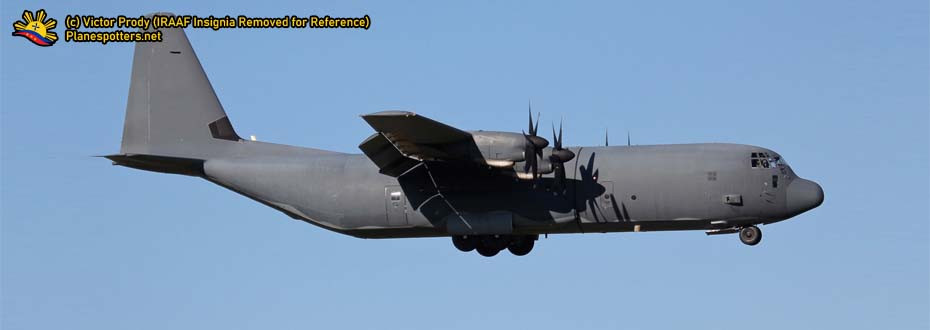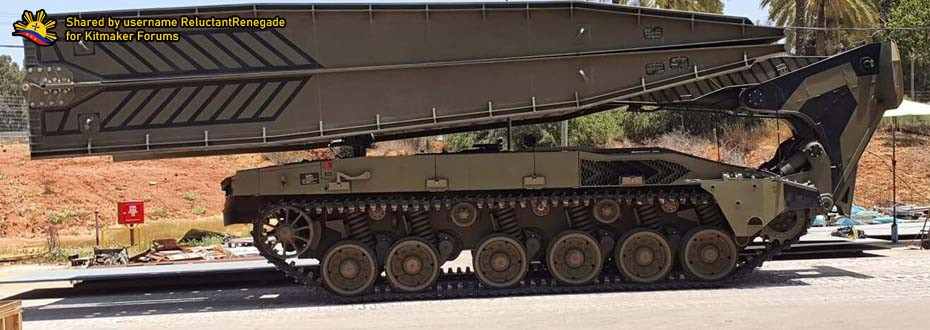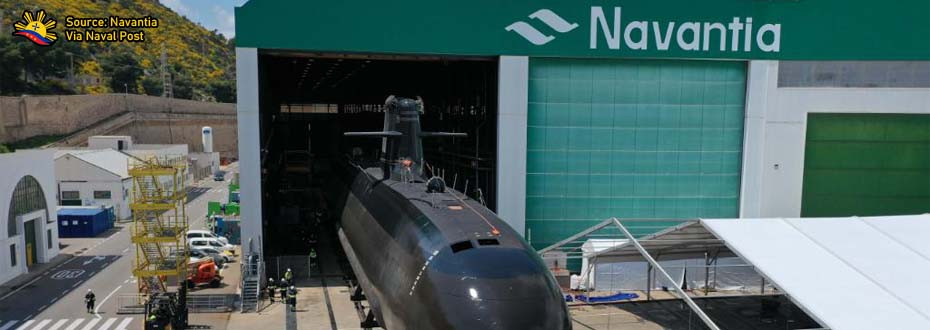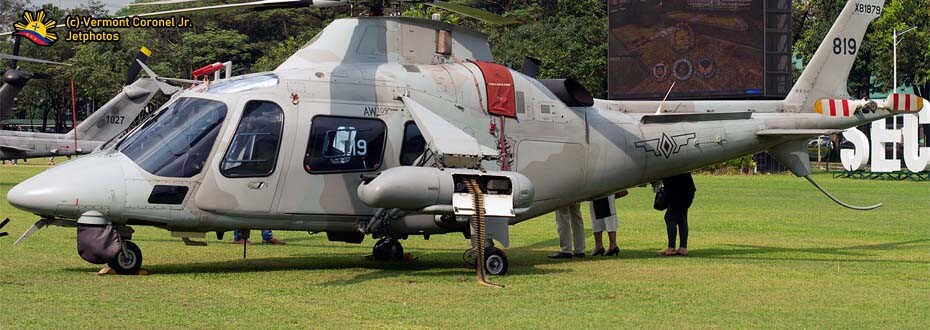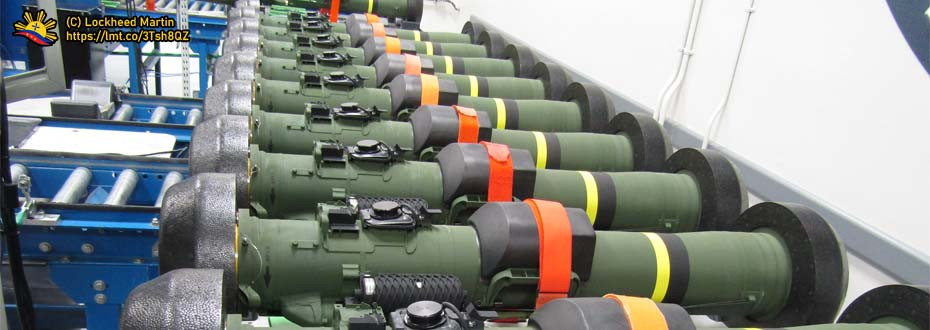DISCUSSION OVERVIEW
 |
| The missile's capabilities are essential for the Philippine defense of its sovereign territory. Image obtained via Wikimedia Commons. |
The Armed Forces of the Philippines pursued its Shore-based missile system or SBMS where it may go utilized by the Philippine Army, only to be renamed later as the Land-based missile system wherein the procurement project's name still stands on the present date and is gaining traction after years of discussion about this project.
While being part of the procurement list within the Revised AFP Modernization Program's Second Horizon for military assets acquisition, the funding and the materialization for the project to be realized will undertake extra measures for the Philippine Government's capacity to gather funds that will create a budget for the project.
The same goes for the Horizon 2's Second Priority List of projects where it is different compared to the First Priority List where it will be funded through the government's General Appropriations Act (GAA) that is enacted annually, the one that embodies the Annual Procurement Plan (APP) of each agency with their own piecemeal of the annual budget.
The funding of big-ticket projects will be done under Capital Outlay, definitely under the Muti-Year Obligations Authority (now called Multi-Year Contracting Authority due to the Department of Budget and Management's newly-introduced Cash-based budgeting for government transactions).
See more: DBM Budget Modernization Program PPT File, Philippine Association for Government Budget Administration, Inc.
So, while the Shore-based missile system procurement program is being sidetracked by budget constraints (and realignments back then), the recent developments make this a nice discussion wherein there is the possibility as well as the potential of obtaining Brahmos Cruise Missle for the Armed Forces of the Philippines to have, in line with its desired minimum credible defense posture.
THE JOINT VENTURE
 |
| State-owned Brahmos Aerospace Limited, India. Image obtained from Wikimedia Commons, Fair Use. |
First of all, one may wonder about the origin of Brahmos' missile development which defines its functions that comes to the interest of numerous countries including the Philippines at the current date. All of which will not be possible without a joint consortium taking place between two companies, encompassing two countries.
For starters, there is the origin of the cruise missile's name. Brahmos is a combination that enjoins the names of two notable rivers from two notable countries: the Brahmaputra River in India and Moskva in Russia. The production of the missiles is handled by the company which also bears the name: Brahmos Aerospace Limited.
This means that the development of this missile is a joint endeavor between India and Russia in which it benefits the former with regards of having themselves armed with such a supersonic cruise missile that is capable to wreak havoc against its target that suffices the need in terms of minimum credible deterrence needed in the name of a country's national security.
The companies that involved in its development are Russia's NPO Mashinostroyeniya which in itself is a known Rocket design bureau in the country and India's Defence Research and Development Organisation (DRDO) managed by the Indian Ministry of Defense wherein this partnership formed the company that produces these missiles and also bears that name.
Such a Joint Venture was a result of a bilateral undertaking between the Governments of the Republic of India and the Russian Federation in which it was put into effect in February 1998, more than two decades ago and the time when Russia was still seen as a friend under a different administration and before all of the sour relationships have come thereafter such as the recent implementation on the U.S. CAATSA sanctions against key Russian companies.
This undertaking helped India's Missile-producing Defense Industrial Complex to improve a lot wherein this military weaponry are an integral part of the country's overall defense efforts as the country has seen several threats with its neighbors Pakistan and China along India's northern borders as well as the defense of its coastline along the wide Indian Ocean where it stands as their own way of having a force deterrent along with a couple of assets that the Indian Armed Forces obtains currently.
Now, after benefiting from this joint venture, Brahmos Aerospace has started to market this cruise missile to the countries like the Philippines in which it comes with that promising capability that this weaponry possesses that may serve as a force worth reckoning with, effectively increasing the whole nation's overall minimum credible deterrence.
DEVELOPMENT OF THE MISSILE WEAPONRY
 |
| A Brahmos missile being launched from its land-based launch platform. Image Source. |
In the terms of developing and producing the missile, the share between the two parties that are part of this joint venture almost has a fair share over the ownership of the Brahmos Aerospace with the Indian DRDO holding 50.5% of the venture while the remainder will be held upon by its Russian missile-making partner.
It was two years later from the joint venture's foundation of Brahmos Aerospace that a successful launch of this supersonic cruise missile platform took place in what has been June 12, the Philippine Independence Day of 2001 in which from thereon the Russians and the Indians that formed the joint venture sees the bright future over the applications that a missile system will bring for a certain country's efforts of having a decent deterrence against other capable forces which is what it is currently seen regarding its procurement for the Philippine Armed Forces.
The missile test that took place on September 5, 2010, has proved this platform's overall potential as a capable supersonic cruise missile that the Indians has employed wherein an advanced version of the Brahmos II successfully hit its target at supersonic speeds which helps affirm its overall image as marketed as a fully-capable supersonic cruise missile system where if considered by the Philippines may serve as an idealistic deterrent that goes alongside other military assets that the country's Armed Forces aspires to have that goes along with the desires of having a minimum credible defense posture that is currently building up with current territorial-related matters coming into the mind like the on-going disputes over the West Philippine Sea.
Currently, the Brahmos cruise missiles are in service within the Indian Armed Forces which includes the Army and the Navy with the Indian Air Force will soon having an air-launched version of the missile, satisfying a requirement within the Modernization process of the Armed Forces of the Philippines.
Such a requirement specifies that a country of origin or at least two countries have such platforms utilized and in active service which defines its reputation that comes in line with assurances needed that such a platform is something that will provide results for the Philippine military shall this be applied on any future military operations.
Hence, it is worth understanding that there are multiple variants of Brahmos that the Indian Armed Forces utilized within its inventory that ranges from land-based platforms to the recently-developed air-launched ones wherein it comes with different specifications and details that have come with different necessities, capabilities, and objectives.
SPECIFICATIONS OF DIFFERENT BRAHMOS VARIANTS
 |
| An air-launched variant is currently being developed. The Philippine Army is opting for a land-based variant that comes in-line with its mandated tasks. |
This resulted in the Brahmos missile having multiple variants which obtains different platform integrations from across the military's branches while attaining the firepower that such a supersonic cruise missile obtains against a key military target on the purpose of getting a significant result that still gets in line in providing deterrence against forces that are seen as a threat especially in the case of the Indian Armed Forces and for any export countries that have seen interest for these platforms.
Land-based Weapon Complex System
Link: http://www.brahmos.com/content.php?id=16
The land-based weapons complex system is just one of the two surface-to-surface variants of the Brahmos family of missile systems with the other one being deployed onboard warships that can also pack a punch against its targets as such missiles are currently in service with the Indian Navy onboard its warships. All of those will be discussed later.
Also known as the surface-launched variant (that goes alongside ship-based ones), the land-based version of the Brahmos missile usually comes in four mobile launchers armed with this supersonic cruise missile that also comes with a mobile command post and support vehicles where it forms a single battery of military vehicles that have come with such sophisticated weaponry for deterrence.
Let it be known that each individual mobile launchers in a single battery for this weapons system are fitted with three missile tubes intended for the Brahmos missiles in which, in aggregation means that a battery of such systems composed of 12 Brahmos missile weapons fit all-in-all, having a capability for each mobile launchers to fire on target upon salvo on a single target, or against three targets in corresponding to the triple missile fit per launcher.
With such a battery setup, it goes sufficient enough for it to wreak havoc against the enemy upon utilization where its firepower, along with the system capacity of effective command and control in a systemic form of warfare gets that overall effectiveness that comes along with that minimum credible defense posture needed for a country like the Philippines.
In connection to the Philippine Army, it is the best chance that such a platform like this one may get considered as it gets along with the land-based force mandate of this military branch where this serves as a primary platform that signifies the Army's shift from Internal Defense up to the Territorial Defense in the light of the current situation taking place in the waters west of the Philippines.
Ship-based Weapon Complex System
Link: http://www.brahmos.com/content.php?id=15
This is another surface-to-surface component of the Brahmos Missile specified here aside from the land-based ones which are installed in individual launchers that forms a single battery of such systems wherein the ship-based Brahmos missile fit, as its name suggests, means that these are meant to be fitted onboard capable combat warships where several Indian Navy warships were fitted by such a cruise missile.
In a usual setup onboard combatant vessels, the warship's size, dimension, and design in correlation for its composition within its class ranging from destroyers down to frigates and corvettes dictate the number of Brahmos missiles that may be attached onboard a vessel as well as on the desire of the end-user such as a certain nation's navy with regards on the best approach on the missiles fit, whether it may be the Brahmos or some anti-ship or cruise missile developed by another supplier.
On the features provided by Brahmos Aerospace regarding this Brahmos missile system for warships, it is the usual thing to see that the launcher intended for these missiles and the corresponding fire control system needs to be in line or compatible with the subcomponents that the warship obtains such as its sensors and navigation systems which are interconnected by a Combat Management System or CMS, in which an Indian warship such as the Brahmos-armed INS Rajput does not have although it is fully-armed (the Rajput-class Destroyers are more of a modified version derived from the Cold War-era Soviet Kashin-class Destroyers.
Currently, the ship-based Brahmos are in service in the Indian Navy's Rajput-class Destroyers like its lead ship INS Rajput and a ship of its class INS Ranvir wherein both platforms obtain 4 Brahmos missiles armed onboard these vessels as well as the newer Kolkota-class Destroyers which is designed to carry 16 of such supersonic cruise missiles.
There are no plans for a ship-derived Brahmos missile for the Philippine Armed Forces especially for its Navy in which the anti-ship missiles it currently obtains came along with the Korean-made Jose Rizal-class Frigates in the form of Hanwha SSM-700K C-Star missiles which is part of the deal.
Air-launched Weapon System
Link: http://www.brahmos.com/content.php?id=19
 |
| This exercise involves a Su-30MKI launching an air-launched variant of the Brahmos Missile. Image Source. |
Two missile tests were made for this variant wherein its launching platform came in the form of India's Russian-made Sukhoi Su-30MKI aircraft where it successfully hit its target that goes satisfiable with its performance as designed for an aircraft-bearing missile platform where it goes the potential in having these weapons asset introduced in active service within the Indian Air Force at a later date shall things get through satisfiable on their end.
Having such a test implies that it is still currently undertaking evaluation wherein it may take time for the Brahmos Aerospace to have it further improved with minor fixes to be made before it enters into the Indian Air Force's active service where it may take time with uncertainties to the timeline provided for these process to come through, although it still obtains that capability which they detailed as something packed with firepower that is capable to obliterate a capital warship.
Even with its potential as dedicated air-launched weaponry fitted onboard a combat fighter, the chances that such a platform may end up in military service within the Armed Forces of the Philippines such as the Philippine Air Force is slim, given that aside from its current testing phase by its manufacturer (which may go against procurement rules that require having an active, proven service within the host country's armed forces or on at least two users), there are other more-preferred platforms of sophisticated air-launched munitions that this service branch seeks that we may only drop hints as of the moment where a detailed discussion will be provided on a later date.
The point being, having such a missile is already sufficing its functions especially if operated by a land-based military such as the Philippine Army in this case wherein other branches like the Philippine Air Force may go to their own respective munitions which can be seen as satisfiable to their requirements and sees as something that can get their respective mandated duties and responsibilities done.
So, to clarify things up from here, what the Armed Forces of the Philippines may be getting will come with Land-based platforms, with an undefined number of batteries provided that may get disclosed later on.
Submarine-launched version
Link: http://www.brahmos.com/content.php?id=20
 |
| India obtains several locally-built Scorpene-class Submarines in its inventory. |
This variant, which is intended for arming submarines further to teeth is something that one may consider a formidable force to reckon with wherein a submarine, with its function of being submerged underwater undetected whilst being fully armed with a supersonic cruise missile like the Brahmos gets along with the Indian Navy's deterrent that goes along with its surface warships that have come fitted with such a formidable munition.
Along the way, the developments made by Brahmos Aerospace for these different variants of Brahmos missile helps them improve their expertise and experience in creating these platforms especially for its home country which is India, wherein their ideas of export into countries like the Philippines goes along with that excellent idea of providing additional deterrence for the country's national defense against an external enemy or a potential one like China over the recent events such as the continuous hegemony over the West Philippine Sea.
SPECIFICATIONS
 |
| Details about the supersonic cruise missile itself. Image Source. |
Alongside the specifications provided above, its performance also comes with functions such as its operation where it follows the fire and forget principle, in the same manner as other missiles like the P-800 Oniks in which it was derived from and others such as the AGM-65 Maverick Missiles and AIM-9 air-to-air missiles that the Philippine Air Force obtains.
The missiles' performance may go with a maximum altitude of 15,000 meters (49,212.60 feet) at its cruising phase with a skimming terminal altitude at a minimum of 10 meters (32.81 feet) upon its final approach into its target with the speed of Mach 2.8 - 3.0 (3,457.44 kph - 3,704.40 kph) which gets into its reputation as a supersonic cruise missile that minimizes reaction time for its target to counter this incoming guided ordnance with installed countermeasures while getting that assurance that the target will be obliterated as a result of the missile's destructive kinetic impact inflicted.
Primarily designed as an anti-ship cruise missile just like the P-800 Oniks that it was derived upon, the Brahmos missiles' performance in terms of its speed and approach against its target is something that the warship's onboard air defense system may find difficult which is why this is seen as preferred weaponry for a country like the Philippines to have given that the enforcement of Chinese claims in the West Philippine Sea comes with the presence of the warships operated by the People's Liberation Army Navy (PLAN) as well as the Chinese Coast Guard.
The missile's speed can be attributed to its propulsion system where it comes with a two-stage propulsion system - first with a solid rocket booster that will propel the rocket on its initial position and acceleration followed by a ramjet which relies on liquid fuel wherein it relies on the missile's forward motion that enhances its speed further to its maximum supersonic levels which are up to Mach 3.
Its propulsion system setup comes as the main factor for the success of the Brahmos' missiles in attaining its reputation as a supersonic missile where it plays along with its guidance system which relies on both the United States' GPS constellation of satellites and its competitor the Russian GLONASS constellation of satellites in which obtaining both positioning guidance systems on piggybacking information goes with its essentials that ensure that a supersonic missile such as the Brahmos is getting on the right track leading to its intended target.
With its features, it is interesting to see with regards to the current development for the Philippine Army's desire in having these munitions which showcase the badly-needed capability in terms of providing the country's territorial defense especially in terms of protecting the waters that surround the whole nation with these missiles in augmentation to the capabilities provided by the Philippine Navy.
ADDITIONAL INFORMATION
 |
| India's President Ram Nath Kovind and Philippine President Rodrigo Roa Duterte during the former's visit to the country. Image Source. |
The agreement includes the maritime security deal between two nations wherein it bolsters cooperation between the Indian Navy and the Philippine Coast Guard regarding matters that involve coordination and deeper monitoring of commercial vessels in which upon undertaking will help these involved agencies exchange information regarding the developments at sea.
Aside from the maritime security deal, India's role with the Philippine defense capability upgrade program was also emphasized, highlighting things that this country participated in the Armed Forces of the Philippines Modernization Program in several ways such as India's Garden Reach Shipbuilding and Engineering's bid for the Frigate Acquisition Program which they lose to South Korea's Hyundai Heavy Industries and of course, this discussion regarding the negotiations of the sale of Brahmos land-based supersonic cruise missiles to the Philippine Army.
Having this recent gestures of an improved relationship between India and the Philippines somewhat improves the guarantee on the sale of these land-based supersonic cruise missiles that the Philippine Army aspires to have given that it really matters much for the country's resolve of having deterrence in correlation to its maritime security and territorial integrity wherein having such a platform not only bolster the Philippine defense posture especially on securing its western seaboard but also serves as a boost for India's local defense industries.
Speaking of India's local defense industries such as the Brahmos Aerospace, if such a deal for the Brahmos supersonic cruise missiles pushes through, it will serve as their first export wherein a country like the Philippines will be its first recipient for such weaponry outside of India in which it will be a welcoming thing to see for the country's overall military capability.
Even though that Brahmos Aerospace is a joint consortium with Russia's NPO Mashinostroyeniya, it is still considered an Indian defense company and by that nature is not covered by the United States sanctions which are known as CAATSA or the Countering America's Adversaries Through Sanctions Act which targets key Russian companies like Rosoboronexport wherein it also affects any potential country that seeks sale on some sophisticated Russian technology such as the S-400 Ground-to-air missile system.
With these pieces of information provided, it goes with the certainty that a deal may push through and the country like the Philippines may finally get the sophisticated supersonic cruise missiles it needs for minimum credible defense posture that goes along with the country's national interest and welfare for the citizen's safety.
TO SURMISE IT UP
 |
| There are four of these Brahmos missile launcher trucks in a single battery. Image Source. |
This missile systems project is seen as one of the promising procurement-related developments there is within the Armed Forces of the Philippines' desire to having a better military composition with better tools, additional skillful personnel, better facilities, and thoroughly-crafted doctrine which is designed to cope up with the current spectrum of security measures meant to fend off internal and external threats that keep on evolving on the current date.
With regards to the recent development regarding the visit of India's President to the Philippines while forging more on stronger ties which already lasted 70 years is something that puts traction for the procurement of Brahmos Supersonic Cruise Missiles that the Philippine Army is seeking as the land-based service branch of the Armed Forces of the Philippines is now gearing itself up in obtaining a capability that is worth sufficient for territorial defense which comes in line to their mandate of defending the whole nation and its sovereignty.
Shall the negotiations and deals firmly forged between the Philippine Armed Forces and the Brahmos Aerospace, it will be a benefit for the country's defense posture and India's defense industry in which both will see the gains on their respective necessities especially for the former's buildup of defense needed to deter the upcoming threat looming in the high seas especially to the west of the country and the latter gaining a customer that will sustain their market of selling their product with effectiveness and satisfaction in mind.
All that it takes now is to wait and see regarding the developments of this missile project wherein there may be progress that will push the deal further or to retract it a bit regarding the circumstances that may come up in the upcoming months. Nevertheless, with vibrant relationships and the ongoing process for the project in place, there will be certainties that give that potential where such a platform may end up within the Army's array of weaponry in which, along with other weapons purchase along with the Armed Forces, gets the minimum credible defense posture that the nation aspires as well as to the attainment of the Army's Transformation Roadmap timeline to have a world-class armed force by the year 2028.









